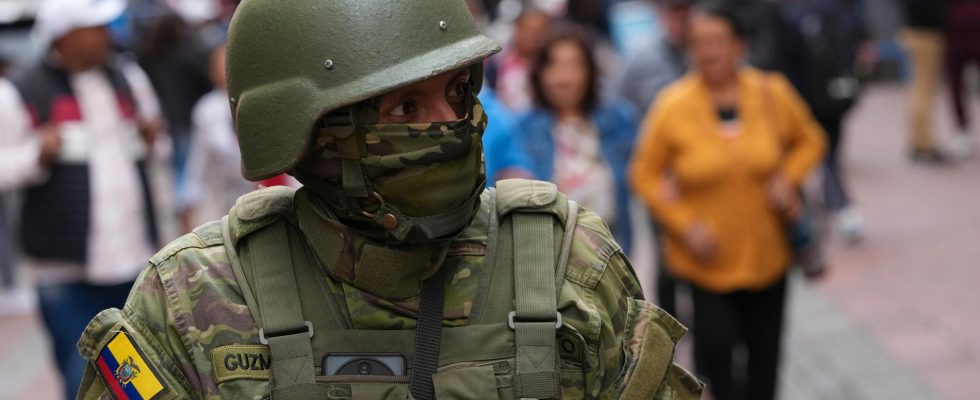unsaveSave
share-arrowShare
expand-left
full screen Soldiers patrol the streets of Quito, Ecuador. Photo: Dolores Ochoa/AP/TT
Several people have been killed, criminal gangs have been labeled terrorists and, according to the government, there is an internal armed conflict. What’s behind the unrest in Ecuador – where gunmen stormed a live TV studio?
1. What has happened?
Chaos reigns in Ecuador, where a nightly curfew and state of emergency were declared on Monday. It happened after Adolfo “Fito” Macías, leader of Ecuador’s largest gang Los Choneros, escaped from a prison in Guayaquil. In addition, Los Lobos leader Fabricio Colón Pico is on the run.
Over 3,000 police and military have been dispatched to search for Fito, while drug gangs have responded with violence. Guayaquil has been particularly troubled, with several dead, but explosions, car fires, looting and shooting are also reported from other places. Police officers have been kidnapped, prison guards held hostage and hospitals taken over by gang members.
“You declared war, so you will get war,” read a statement addressed to President Daniel Noboa, which a policeman was forced to read out.
On Tuesday, thousands of viewers witnessed how masked men stormed in during a live broadcast at the TV channel TC in Guayaquil and threatened the presenter and other staff with firearms and explosives.
2. When did the violence flare up?
Sandwiched between the world’s largest cocaine producers, Colombia and Peru, Ecuador was long seen as relatively peaceful compared to other Latin American countries. But in recent years, violence has exploded as rival gangs, some linked to cartels in Mexico and Colombia, have begun fighting for influence.
Several prisons are controlled by gangs and in 2021 a series of brutal massacres took place with hundreds of deaths as a result. The violence has spread beyond the walls, where kidnappings, murders, robberies and extortion have made Ecuador one of the region’s most violent countries. Last year was the bloodiest so far, with over 7,600 murders, according to the AP news agency.
A record amount of drugs, 220 tons, was seized last year, according to the AFP news agency.
3. What is the government doing to get the situation under control?
The new president Daniel Noboa has had a security nightmare on his neck. He has promised to eradicate drug-related violence and says he has a plan to succeed in this.
According to Noboa, Ecuador is now in an “internal armed conflict”. Some 20 criminal gangs, including Los Choneros, Los Lobos, Los Tiguerones and Los Águilas, have been labeled terrorists and belligerent non-state actors.
Military is sent in to take control of the prisons.
